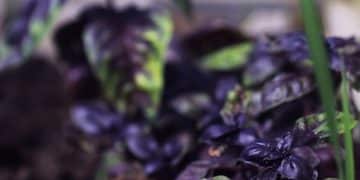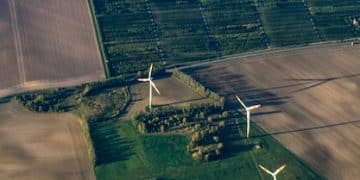Composting strategies for carbon sequestration

Composting strategies for carbon sequestration involve using the right mix of organic materials and techniques to effectively capture carbon, improve soil health, and reduce greenhouse gas emissions.
Composting strategies for carbon sequestration are gaining traction as a sustainable solution. Have you ever considered how effective composting can benefit both your garden and the environment? Let’s dive into the methods and practices that make a real difference.
Understanding carbon sequestration in composting
Understanding carbon sequestration in composting is essential for anyone interested in environmental sustainability. By turning organic waste into rich compost, we can effectively reduce the overall carbon footprint while enriching the soil.
The process of composting not only helps to recycle nutrients but also plays a crucial role in trapping carbon dioxide in the soil. This is vital for combating climate change and improving soil health.
How Carbon Sequestration Works
When organic materials decompose, they release and capture carbon. Here’s how this process helps with carbon sequestration:
- Soil aeration
- Reduction of greenhouse gases
- Improvement of water retention
- Enhancement of microbial activity
Each of these factors contributes significantly to the capture of carbon, allowing the soil to act as a carbon sink.
Benefits of Carbon Sequestration in Composting
Utilizing compost improves productivity in gardens and agricultural systems. Carbon sequestration has several key benefits:
- Creates healthier ecosystems
- Reduces reliance on chemical fertilizers
- Enhances biodiversity in soil
Furthermore, the more carbon we can sequester through composting processes, the better it is for our planet’s climate stability.
Every time we compost, we not only create nutrient-rich soil but also contribute to the global effort to reduce atmospheric carbon. By adopting these practices, we can all play a role in mitigating climate change.
Best materials for effective composting

When it comes to composting, choosing the best materials is crucial for achieving a successful result. Knowing what to include ensures that the composting process is effective and rich in nutrients.
The right mix of green and brown materials helps create a balanced composition. Greens provide nitrogen, while browns offer carbon. This balance is key for maintaining microbial activity and promoting decomposition.
Essential Green Materials
Green materials are often moist and high in nitrogen. Here are some effective examples:
- Grass clippings
- Fruit and vegetable scraps
- Coffee grounds
- Eggshells
These items break down quickly and are essential for generating heat in the compost pile.
Key Brown Materials
Brown materials are dry and provide carbon. Including these helps with aeration and moisture control. Some excellent sources of brown materials include:
- Dried leaves
- Shredded newspaper
- Wood chips
- Cardboard
Combining these elements in the right proportions can speed up the composting process, allowing you to create rich soil amendments more quickly.
Additionally, it’s vital to avoid adding certain materials like meat, dairy, and oily substances, as they can attract pests and create odors. A well-chosen mix not only enhances decomposition but also enriches the final compost product.
Techniques to enhance carbon capture
Implementing techniques to enhance carbon capture in composting can significantly improve the effectiveness of your compost pile. By adopting specific strategies, you can maximize the benefits for the environment and your garden.
One effective method is to regularly aerate your compost. This involves turning the compost pile frequently to introduce oxygen. Proper aeration promotes aerobic bacteria, which are essential for breaking down organic materials while capturing carbon efficiently.
Moisture Management
Another critical factor is moisture control. Keeping your compost pile moist but not overly wet ensures that microorganisms can thrive. If the pile is too dry, decomposition slows down, reducing carbon capture. Aim for a moisture level similar to a damp sponge.
Adding Biochar
Incorporating biochar into your compost can greatly enhance its ability to sequester carbon. Biochar is a type of charcoal that improves soil structure and retains moisture. By introducing biochar, you not only increase carbon storage but also create an environment that is beneficial for microbial life.
- Improves soil health
- Increases nutrient availability
- Enhances water retention
A well-balanced compost mixture is another way to improve carbon capture. The recommended ratio of greens to browns is around 1:3. This balance ensures that nitrogen and carbon are present in optimal amounts for microbes to flourish.
Using Compost Tea
Finally, making compost tea can be a great way to utilize nutrient-rich water from finished compost. This liquid can help promote microbial activity in new compost piles, which is essential for effective carbon capture. Spray it on your garden to enrich the soil and promote growth.
Measuring the impact of composting on the environment

Measuring the impact of composting on the environment is crucial for understanding its benefits. Composting reduces waste and enhances soil health, playing a significant role in ecological sustainability.
One way to assess its impact is by calculating the reduction in greenhouse gas emissions. Composting organic waste prevents it from ending up in landfills, where it produces methane, a potent greenhouse gas. Instead, when composted, this organic material decomposes aerobically, releasing much less harmful emissions.
Soil Quality Improvement
Another aspect to consider is the improvement of soil quality. Adding compost increases the organic matter in soil, which is beneficial for plant growth. Rich soil enhances water retention, reduces erosion, and provides essential nutrients, ultimately leading to healthier ecosystems. Soil enriched with compost also supports greater biodiversity, fostering microbial activity essential for sustainable agriculture.
Long-Term Environmental Benefits
The long-term environmental benefits of composting include improved air quality and a decrease in reliance on chemical fertilizers. By recycling organic waste, composting also conserves resources and promotes a circular economy. As compost improves soil health, it reduces the need for synthetic additives that can harm the environment.
- Reduces landfill waste
- Lowers carbon footprint
- Enhances biodiversity
- Improves water quality
By measuring these factors, we can better appreciate the significant role composting plays in mitigating environmental issues. Tracking these impacts helps promote more widespread composting practices, encouraging communities to adopt sustainable waste management solutions.
FAQ – Frequently Asked Questions about Composting Strategies
What is the main benefit of composting?
The main benefit of composting is that it reduces organic waste in landfills and improves soil health, leading to better plant growth and carbon sequestration.
What materials can I compost?
You can compost a variety of materials such as fruit scraps, vegetable peels, grass clippings, leaves, and shredded paper. Avoid meat, dairy, and oily substances.
How does composting help the environment?
Composting helps the environment by capturing carbon, reducing methane emissions from landfills, and enriching the soil, which supports plant growth and biodiversity.
How often should I turn my compost pile?
You should turn your compost pile every 2 to 4 weeks to aerate it, which speeds up the decomposition process and enhances carbon capture.





